America’s Crown Communities 2008
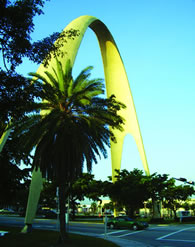
American City & County‘s Crown Communities Awards recognize innovative projects and programs that local governments have completed in the last year. The winners represent the best that local governments have to offer and exhibit how creative problem solving and collaboration produces impressive results.
Readers from cities and counties nominated projects in their communities, and the editors selected 10 stand-out entries this year. The winning efforts may be local, but their methods deserve national attention.
The winners are:
- Bellflower, Calif., Downtown Revitalization
- Chandler, Ariz., Community Facilities
- Forest City, N.C., McNair Field
- Gila County, Ariz., Wildfire Prevention
- Lake County, Fla., Cagan Crossing Community Library
- Miami Gardens, Fla., Police Department
- Monrovia, Calif., Monrovia Area Partnership
- Pittsburgh Hot Metal Bridge Rehabilitation
- Tampa, Fla., Community Investment Tax Construction Bond
- Virginia Beach, Va., Performing Arts Center
Look for the entry forms for the 2009 Crown Communities on the American City & County Web site early next year.
Bellflower, Calif.
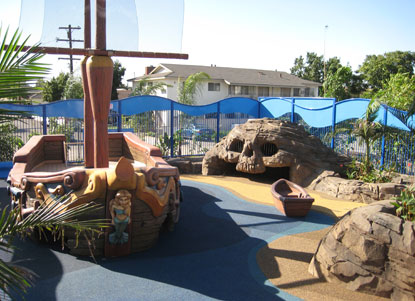
Situated between Los Angeles and Long Beach, downtown Bellflower was a thriving shopping destination in the 1950s. As large malls in surrounding communities drew shoppers away in the 1970s, Bellflower’s downtown began to deteriorate. Five years ago, city leaders crafted a plan to revitalize the shopping district, focusing on Bellflower Boulevard.
In the last year, several projects have been completed that are drawing visitors back downtown. The city purchased a prominent building and remodeled it to attract national restaurant and coffee shop chains. The construction was completed in October 2007, and the businesses moved in shortly thereafter. Next to the building and its outdoor seating areas is a new park, Friendship Square Plaza, which includes a fountain and a pirate-themed playground, and the Town Center Gateway Plaza, which is a decorative open space with directional information for visitors.
Nearby, the city restored its Pacific Electric Train Depot, which was a stop on an interurban trolley system in Los Angeles County that ceased operation in the 1960s. The restoration included construction of a raised train depot deck and station platform, an historical apple orchard and garden, historical markers and signs, and the construction of a field house that includes public restrooms. The facility was completed in June 2008. The civic improvements complement façade renovations, construction of a public stage and pocket parks, and conversion of a two-way street to a one-way street so restaurants can offer outdoor dining.
Population: 77,513
Project: Downtown Revitalization
Cost: $7.5 million
Date completed: June 2008
Agencies involved: Bellflower Redevelopment Agency, U.S. Department of Housing and Urban Development, Metropolitan Transportation Authority, Rivers and Mountain Conservancy
Chandler, Ariz.
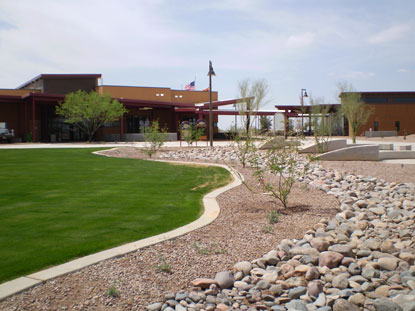
Chandler, Ariz., needed a place to store reclaimed water for irrigation, so its Municipal Utilities Department purchased 113 acres of undeveloped farmland for a recharge facility in 2001. Later, the city determined the facility would not need all the space, but, two other departments did: Community Services and Police. Both were looking for land, one for a new park and the other for a substation. Three years later, a master plan was created that included room for all three facilities on the 113 acres.
The 20,000-square-foot police substation is located on 4 acres; the 31-acre park includes a fishing lake and a 10,000-square-foot Environmental Education Center with exhibit areas, classrooms and a nature discovery room; and the remaining 78 acres contain water recharge basins. Most of the project was funded through system development fees, which the city began charging developers in 1997 to help offset the cost of expanding services to accommodate growth.
The recharge basins are surface wetlands that have become habitats for birds and other wildlife. Walking trails surround the basins and feature wildlife-viewing blinds and signs to explain the ecosystem and water resource management. The fishing lake uses water that was recharged into the aquifer through the wetlands and recovered by an onsite well. The facility also contains an outdoor amphitheater, a playground, picnic areas and structures for shade.
Population: 250,619
Project: Chandler Heights Community Facilities
Cost: $27 million
Date completed: April 2008
Agencies involved: Municipal Utilities, Community Services, Police
Private companies involved: Carollo Engineers, Logan Simpson Design, Deutsch Architecture Group Applied Engineering, Mortenson Construction
Forest City, N.C.

Forest City, N.C., grew up as a mill town in the late 1800s, but mass closings of textile mills in Rutherford County swept out 6,000 jobs in the 1990s. To recover from that blow to the economy and residents’ morale, town leaders began focusing on the community’s strengths to attract economic development, one of which was its concentration of sports facilities and parks. Town leaders decided to turn an existing baseball field into a new stadium, and they attracted the Spartanburg Stingers, a member of the Coastal Plains League, as the anchor tenant.
Forest City borrowed $3.5 million to finance stadium construction and sought private investments for the rest of the cost. Construction began in January 2008 and was finished by May 29, 2008, when more than 3,500 people stood in line waiting for opening day. Average attendance for the Forest City Owls’ 30 home games was 2,200 for the 1,500-seat facility. Over the summer, 63,931 people watched baseball at McNair Field, breaking all attendance records in the 12-year history of the Coastal Plains League, which has 15 teams in North Carolina, South Carolina and Virginia.
McNair Field is located within walking distance of downtown retail and residential areas and will play host to 100 to 150 events throughout the year, including concerts and tournaments. And, for 2009, the town has bid to host the league all-star game. The baseball team is expected to have an annual direct local economic impact of $1 million and an indirect impact of $4 million per season.
Population: 7,549
Project: McNair Field
Cost: $5 million
Date completed: May 2008
Agencies involved: Forest City, Rutherford County, North Carolina Parks and Recreation Trust Fund, Rutherford County Tourism Development Authority
Private companies involved: Robert and Janice McNair Foundation, Lipscomb Signs, McGill & Assoc., G&S Construction, Forest City Baseball
Gila County, Ariz.

At the beginning of the 2006 fire season, the U.S. Forest Service rated Gila County as one of the most at-risk areas for “catastrophic wildfire” in the western United States. It has suffered nine years of drought, which led to a bark beetle infestation that destroyed the ponderosa pine forest and has drawn attention to dry land forest management. And, several large fires burned through the area in the last few years.
Local leaders have worked together to improve their response to wildfires by fixing radio communication gaps, training personnel and acquiring equipment. In the last year, they coordinated to set up water sites for helicopters and emergency fire trucks where no water would normally be available around the 298,000 acres of the U.S. Tonto Forest. The county purchased 6,000-gallon pumpkin tanks, 20,000-gallon surplus military bladders and 5,000-gallon manufactured water dip tanks, and placed them close to potential fire sites. The county also situated two 30,000-gallon Klein tanks to supply water to trucks and other fire equipment to keep the bladders and dip tanks full. In addition, where privately owned ponds had clear access for helicopters, the county negotiated agreements with the owners to gain access to the water for fire fighting.
As a result of the project, Gila County was substantially more prepared for the 2007 fire season, and last year only one fire spread more than 10 acres. The location of the water sources and the training to use them helped extinguish blazes that historically would have grown much larger.
Population: 51,335
Project: Wildfire Prevention
Cost: $551,000
Date completed: 2007
Agencies involved: Gila County, Tonto National Forest Service, Northern Gila County Volunteer Fire Departments, Payson Fire, Christopher Kohls Fire Department, and the communities of Pine, Strawberry, Star Valley, Christopher Creek and the Town of Payson
Lake County, Fla.
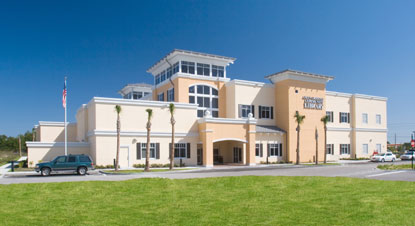
In 2002, Lake County opened its first library branch in 6,200 square feet of leased space in the Four Corners area, the intersection of four counties: Lake, Osceola, Polk and Orange. The branch was a good starting point, but a 20-year projection of library space needs showed that a much larger facility would be required in the rapidly growing area near Walt Disney World. The closest library in any direction was 10 miles away in Osceola County.
The county purchased 2 acres for its first permanent library in the Cagan Crossing development in December 2002 and began planning a full-service facility. Its procurement office and Facilities Development and Management Department worked closely with the architect and builder to create a two-story, 30,000-square-foot library that met environmentally friendly standards, included a café that could be leased to a vendor, and contained room to expand services and the library’s collection.
On the opening afternoon, 1,000 people visited the new library, which for now occupies just the bottom floor’s 18,000 square feet. It includes a self-checkout area, 31 public-access computers, free wireless Internet access and a 160-seat community room.
Lake County negotiated an agreement with Polk and Osceola counties to allow nearby residents to use the facility. Additionally, local hotels are directing their guests to the library to use the Internet. Since opening, circulation has increased 65 percent over the previous year, borrower registration is up 287 percent and computer Internet use is up 57 percent.
Population: 301,059
Project: Cagan Crossing Community Library
Cost: $8.3 million
Date completed: February 2008
Agencies involved: Lake County, Florida Department of State, U.S. Department of Housing and Urban Development, Polk County, Osceola County
Private companies involved: Harvard Jolly Architects, R.D. Michaels
Miami Gardens, Fla.

When Miami Gardens, Fla., residents voted to incorporate in 2003, many called for the city to establish its own police force to improve public safety in the urban area. Miami Gardens contracted with Miami-Dade County for police protection until December 2007, when it would establish its own department. The city began planning in earnest to set up the new department in 2006, following a feasibility study that determined three main challenges: raising $4.2 million to bridge the transition between the two departments, recruiting officers, finding a headquarters building and purchasing all equipment in only 15 months.
The city manager proposed, and residents supported, a 64 percent tax increase to raise the money. To lure talented police officers from across the country, the city assembled an aggressive pay and incentive package. Then, Miami Gardens converted a 27,000-square-foot industrial building into its police headquarters and incorporated space for a non-emergency call center. On Dec. 16, 2007, the city assumed patrol from the county, and now, residents have what they asked for: a 150-person police staff, a police headquarters and quick response to all calls for help. Since then, Part I crimes, including murders, rapes and assaults, in the city have reduced 17 percent.
Population: 109,200
Project: Formation of the Police Department
Cost: $34 million
Date completed: December 2007
Agencies involved: Miami Gardens, Broward College, Miami-Dade College, Miami-Dade Police Department, Florida Department of Law Enforcement, Tallahassee Community College
Private companies involved: L3 Communications, Bering Point, Verizon, Sunguard/OSSI, Calder Race Course, Graphic Designs International, Glock, Miami Skyline and GEC Associations
Monrovia, Calif.
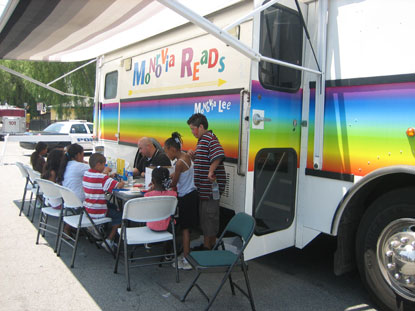
The Monrovia Area Partnership was developed in 2006 as a comprehensive approach to deliver services, eliminate crime and blight, and empower neighborhoods by fostering activism, volunteerism and community pride. The three-year program was established with a $1.2 million budget for property improvement grants. Grant recipients agree to attend a code education workshop, participate in at least one volunteer project, eliminate chain link fencing, place a sign on their property marketing the program, and disseminate city information to their neighbors. Home improvement grants come from redevelopment funds, and the code enforcement education program is funded through Community Development Block Grants. So far, more than 70 grants have been awarded for repairs and improvements, which are made by at-risk youth supervised by a licensed contractor. Police also have increased uniformed patrols, the Fire Department has offered fire prevention and emergency preparedness instruction, the Public Works Department has replaced damaged street lighting and repaired roads, and the Community Services staff developed a mobile literacy and recreation van. The Human Resources Departments offers applications and assistance for city employment and summer internships at city jobs for teens.
Since the program began, Monrovia has seen a marked reduction in blight and crime, volunteerism has increased, and “points of contact” regularly report graffiti and blight conditions to the city.
Population: 39,147
Project: Monrovia Area Partnership
Cost: $800,000
Date completed: Phase I: January 2008
Agencies involved: All Monrovia departments, the Community Development Commission of Los Angeles County
Private companies involved: The Monrovia Unified School District, Santa Anita Family YMCA, Volunteer Center of the San Gabriel Valley, Monrovia-Arcadia Ministerial Association
Pittsburgh
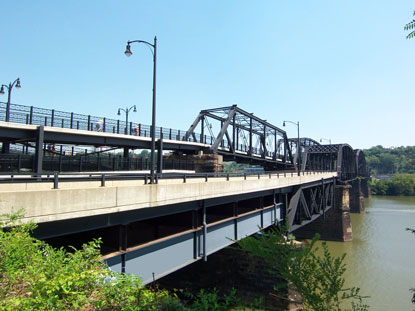
In 1900, the Jones & Laughlin Steel Co. built two railroad bridges across the Monongahela River to transport molten metal between the north and south sides of its Pittsburgh plant. Although the plant shut down many years ago and the steel mill property on both sides of the river has been redeveloped, the bridges remained unused. One of the bridges was converted to two-lanes for vehicles in 2000, and in 2003, the city’s Urban Redevelopment Authority decided to turn the smaller bridge, The Hot Metal Bridge, into an exclusive trail for pedestrians and bicyclists. It would complete a trail system that links the 150-mile Great Allegheny Passage Trail and the Eliza Furnace Trail, creating a continuous, non-motorized, 316-mile-long trail system between Pittsburgh and Washington.
The project called for only a few major renovations to preserve the structure’s historic appearance. The existing bridge piers and abutments were retained, the trusses were rehabilitated, a new cast-in-place reinforced concrete bridge deck was constructed, and new ornamental railings and lighting were installed. The project also included constructing a 218-foot-long bridge over Second Avenue and ramps to connect the bridge at each end to walking and cycling trails. A plaque was added to describe the history of the local steel industry.
Now, employees at the Pittsburgh Technology Center on the river’s north side can walk or bicycle across The Hot Metal Bridge to the South Side Works, a mixed-use development. The bridge also adds a pedestrian-friendly feature to the city’s waterfront.
Population: 2.3 million
Project: Hot Metal Bridge
Cost: $11 million
Date completed: November 2007
Agencies involved: Pittsburgh Urban Redevelopment Authority, Allegheny Trail Alliance, Pennsylvania Department of Conservation and Natural Resources, Penn DOT, Friends of Riverfront
Private companies involved: Parsons Brinckerhoff, Brayman Construction
Tampa, Fla.
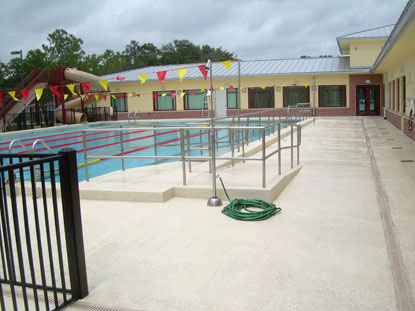
In 1999, Tampa established a $15 million bond fund to upgrade 16 community centers, swimming pools, senior centers and athletic fields. The city used the bond fund to obtain additional revenue, such as Community Development Block Grant funds, the National Football League Youth Education Town Center fund and other grants that brought the total to more than $20 million.
The first improvement projects were completed in 2002, and included constructing a $1.5 million, 12,700-square-foot community center in an existing prominent city park. The center’s programming is focused on senior citizens, and the facility includes a large ballroom and 12 shuffleboard courts. The largest project in the program was the $3.3 million renovation of a community center completed in 2006, which turned a small building into a major facility in a part of the city that previously only had small playgrounds. The building was gutted and rebuilt, adding a gymnasium and an outdoor pool. The 17,200-square-foot structure includes a weight room, library, craft room, computer lab, game room and multipurpose room. Nearby athletic fields also were renovated and upgraded.
The final project in the program, a $1 million pool renovation, was completed this spring and included new equipment, piping, decks and pool play features. The pool is located next to a new $2 million, 10,900-square-foot community center that was built on a brownfield and completed in 2007. The program has been so successful that the city established a similar bond fund in 2006 to improve an additional 12 city facilities.
Population: 320,000
Project: Completion of 1999 Community Investment Tax Construction Bond Program
Cost: $20 million
Date completed: Spring 2008
Agencies involved: Various Tampa departments
Private companies involved: 16 projects using approximately 30 architects and construction companies
Virginia Beach, Va.

Until recently, Virginia Beach had a little bit of everything except a venue for concerts, dance, theater, speakers and comedy performances. To change that, the city council dedicated $35 million of city funds in 2004 to build a state-of-the-art, 86,000-square-foot facility to celebrate the arts and showcase local, regional and national performing artists. A non-profit foundation was established soon after to raise additional funding from private donors and the state.
The site for the new venue is in the city’s Town Center, a pedestrian-friendly, live-work-play development located near transit. It also is within five miles of 78 percent of the city’s residents and 37 elementary schools, seven middle schools and seven high schools, making it a convenient location for field trips and school programs.
The Sandler Center for the Performing Arts features a 1,300-seat theater with two balconies and two levels of side boxes. The 4,200-square-foot stage is complemented by an apron, orchestra pit and trap room. A 2,400-square-foot studio theater and rehearsal hall features adjustable acoustic systems to accommodate a variety of performances, and an outdoor plaza includes a performance area for up to 400 patrons for festivals, outdoor shows and social activities. Shops and restaurants surround the plaza.
The center opened in November 2007 and welcomed more than 62,000 people in its first eight months to concerts by well-known performers Tony Bennett, Bonnie Raitt and Itzhak Perlman, as well as local theater and musical groups. The city owns the facility, Philadelphia-based Global Spectrum manages the daily operations, and the Virginia Arts Festival promotes and produces the national performers. The center works with the Virginia Beach School System to encourage youth participation in arts and theater programs.
Population: 435,619
Project: Sandler Center for the Performing Arts
Cost: $46.7 million
Date completed: November 2007
Agencies involved: Virginia Beach, Commonwealth of Virginia
Private companies involved: CMAA Architects, Phillip Johnson/Alan Richie Architects, Clancy & Theys Construction Co.




















